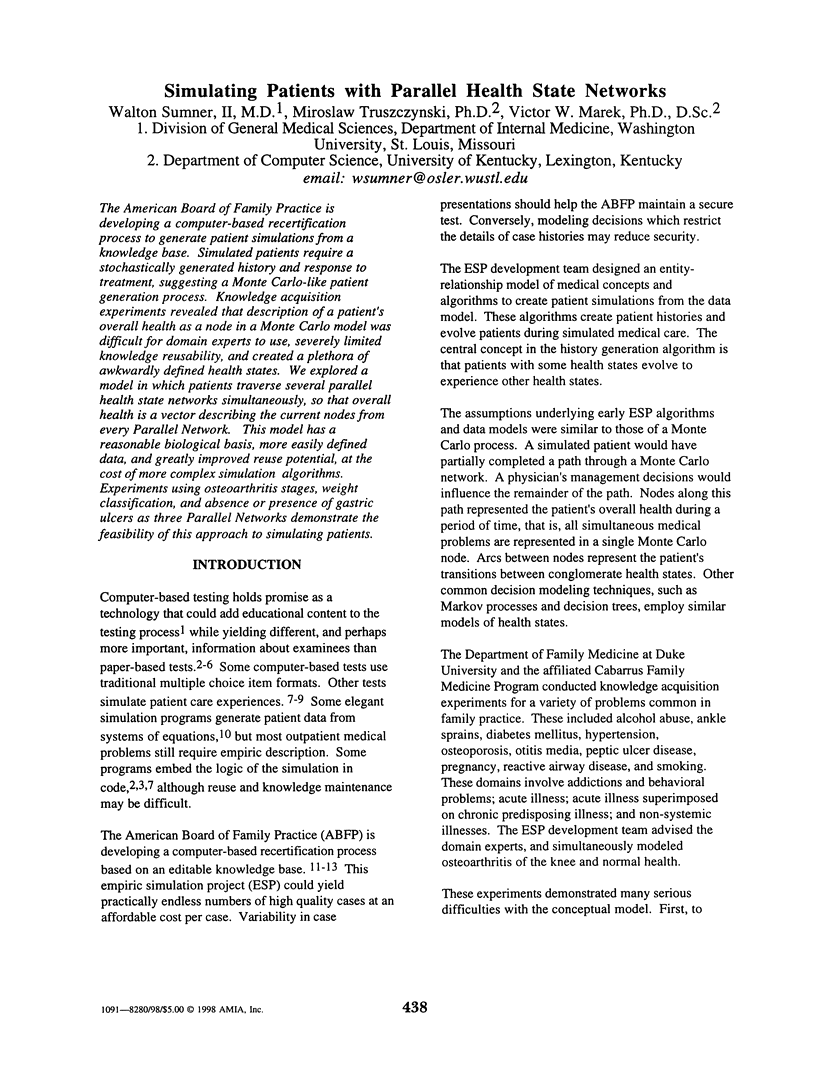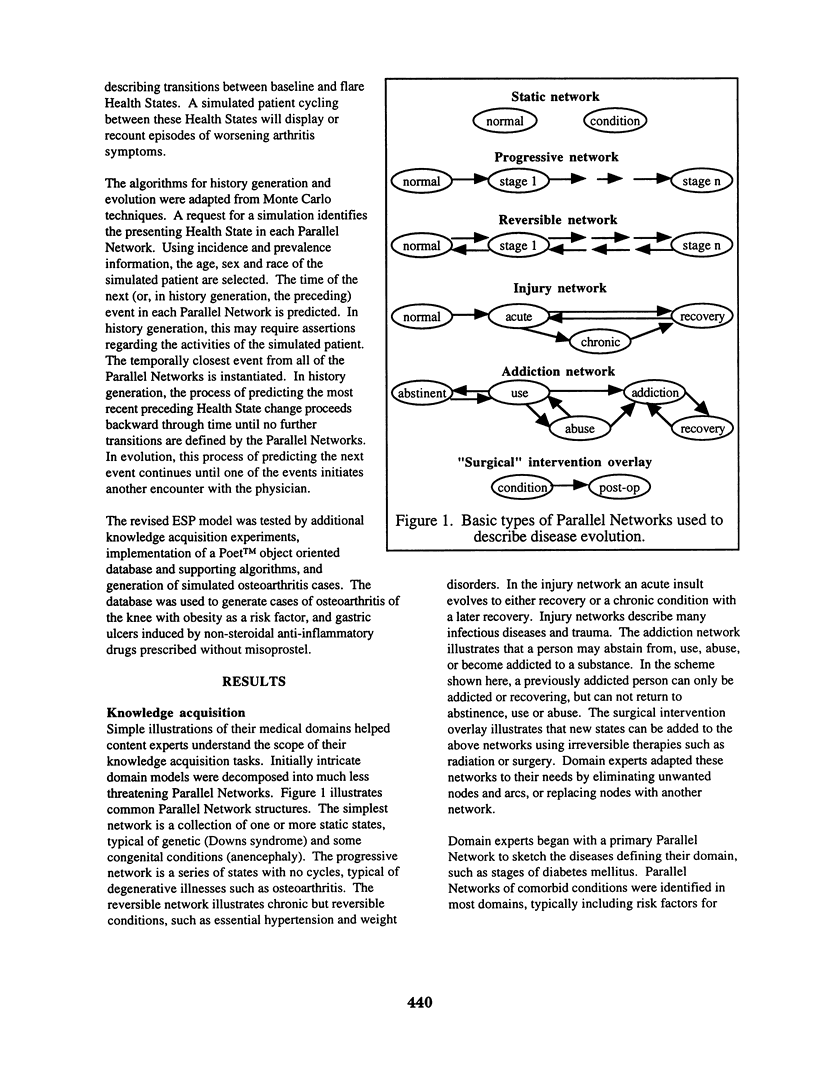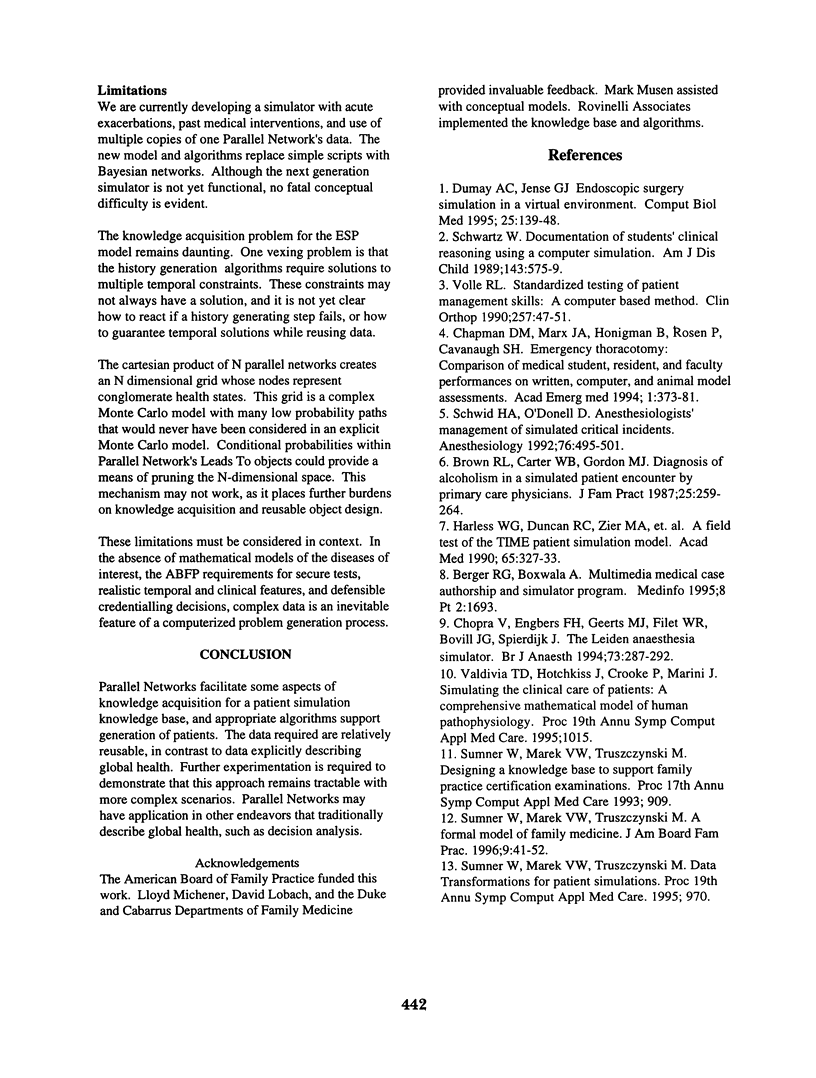Abstract
The American Board of Family Practice is developing a computer-based recertification process to generate patient simulations from a knowledge base. Simulated patients require a stochastically generated history and response to treatment, suggesting a Monte Carlo-like patient generation process. Knowledge acquisition experiments revealed that description of a patient's overall health as a node in a Monte Carlo model was difficult for domain experts to use, severely limited knowledge reusability, and created a plethora of awkwardly defined health states. We explored a model in which patients traverse several parallel health state networks simultaneously, so that overall health is a vector describing the current nodes from every Parallel Network. This model has a reasonable biological basis, more easily defined data, and greatly improved reuse potential, at the cost of more complex simulation algorithms. Experiments using osteoarthritis stages, weight classification, and absence or presence of gastric ulcers as three Parallel Networks demonstrate the feasibility of this approach to simulating patients.
Full text
PDF




Selected References
These references are in PubMed. This may not be the complete list of references from this article.
- Berger R. G., Boxwala A. Multimedia medical case authorship and simulator program. Medinfo. 1995;8(Pt 2):1693–1693. [PubMed] [Google Scholar]
- Brown R. L., Carter W. B., Gordon M. J. Diagnosis of alcoholism in a simulated patient encounter by primary care physicians. J Fam Pract. 1987 Sep;25(3):259–264. [PubMed] [Google Scholar]
- Chapman D. M., Marx J. A., Honigman B., Rosen P., Cavanaugh S. H. Emergency thoracotomy: comparison of medical student, resident, and faculty performances on written, computer, and animal-model assessments. Acad Emerg Med. 1994 Jul-Aug;1(4):373–381. doi: 10.1111/j.1553-2712.1994.tb02648.x. [DOI] [PubMed] [Google Scholar]
- Chopra V., Engbers F. H., Geerts M. J., Filet W. R., Bovill J. G., Spierdijk J. The Leiden anaesthesia simulator. Br J Anaesth. 1994 Sep;73(3):287–292. doi: 10.1093/bja/73.3.287. [DOI] [PubMed] [Google Scholar]
- Dumay A. C., Jense G. J. Endoscopic surgery simulation in a virtual environment. Comput Biol Med. 1995 Mar;25(2):139–148. doi: 10.1016/0010-4825(94)00041-n. [DOI] [PubMed] [Google Scholar]
- Harless W. G., Duncan R. C., Zier M. A., Ayers W. R., Berman J. R., Pohl H. S. A field test of the TIME patient simulation model. Acad Med. 1990 May;65(5):327–333. doi: 10.1097/00001888-199005000-00014. [DOI] [PubMed] [Google Scholar]
- Schwartz W. Documentation of students' clinical reasoning using a computer simulation. Am J Dis Child. 1989 May;143(5):575–579. doi: 10.1001/archpedi.1989.02150170077026. [DOI] [PubMed] [Google Scholar]
- Schwid H. A., O'Donnell D. Anesthesiologists' management of simulated critical incidents. Anesthesiology. 1992 Apr;76(4):495–501. doi: 10.1097/00000542-199204000-00002. [DOI] [PubMed] [Google Scholar]
- Sumner W., 2nd, Truszczynski M., Marek V. W. A formal model of family medicine. J Am Board Fam Pract. 1996 Jan-Feb;9(1):41–52. [PubMed] [Google Scholar]
- Volle R. L. Standardized testing of patient management skills. A computer-based method. Clin Orthop Relat Res. 1990 Aug;(257):47–51. [PubMed] [Google Scholar]


